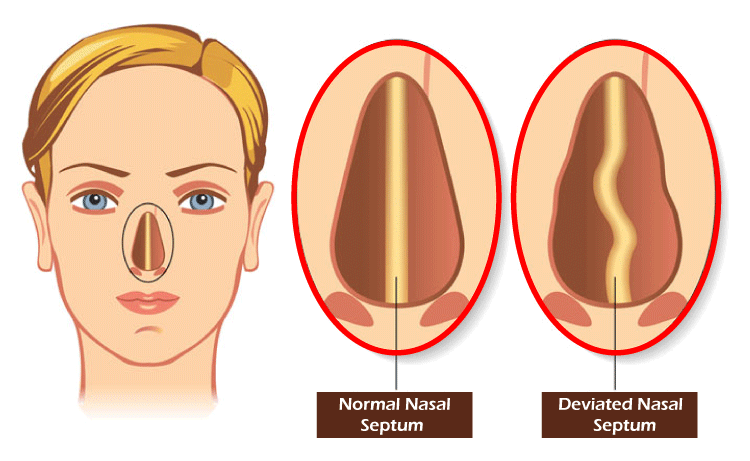What is the Full Form of DNS in MedicalDNS: Deviated Nasal SeptumDNS stands for Deviated Nasal Septum. Deviated Nasal Septum occurs when a thin wall between the nasal passages becomes dislocated or deviated. Deviations can be minimal and without any symptoms or severe nasal blockage. 
The nasal Septum is defined as the wall separating the left and right sides of the nose. It is covered by skin that is richly vascularized, firm and flexible. For the left and right sides of the nose to be of equal size, the nasal septum should ideally lie exactly in the middle. The nasal septum is slightly off-center in about 80% of people, but it is not visible. Rarely, the septum is more evidently away from the center, in that case it is referred to as a deviated septum. In individuals with a deviated septum, one side of the nose is wider than usual while the other is narrower. As a result, the airflow in the nostrils is disrupted, and the narrowed side may sometimes become obstructed. Sinus apertures can occasionally become clogged, resulting in a long-lasting sinus infection known as sinusitis. The nasal septum's epidermis can become dry and cracked as a result of the nose's altered airflow pattern, which frequently results in nosebleeds. Reasons for a Deviated Nasal Septum
Types of nasal septum abnormalities

Nasal septum deviation symptoms
DiagnosisA medical doctor will start by inquiring about the symptoms. Doctors will examine the patient physically, which will include a careful inspection of the nose. They will examine the nose's exterior surface. By flashing a strong light into your nostrils, they can also see inside the nose. One could visit a specialist like a cosmetic surgeon or a doctor for the ears, nose, and throat. TreatmentMost patients don't need deviated septum treatment since their symptoms are either non-existent or mild. The sort of deviation will determine whether treatment is required; if the deviation is milder with fewer symptoms, there isn't a need for treatment. The ear, nose, and throat physician perform a septoplasty if there is a mechanical obstruction and breathing difficulties. This surgery involves moving the septum to the middle of the nose or straightening it. A cautious approach to septal surgery is also used on children with DNS. Procedure for SeptoplastyA septoplasty is usually a one- two hour procedure. The patient gets discharged from the hospital within the same day. Three major steps of a septoplasty are as follows:
PreventionSome people are born with a deviated septum. It can't be prevented whereas, people who have a deviated septum at birth can take steps to reduce the risk of injury. Some of the ways to prevent DNS are:
Next TopicFull Form
|
 For Videos Join Our Youtube Channel: Join Now
For Videos Join Our Youtube Channel: Join Now
Feedback
- Send your Feedback to [email protected]
Help Others, Please Share










